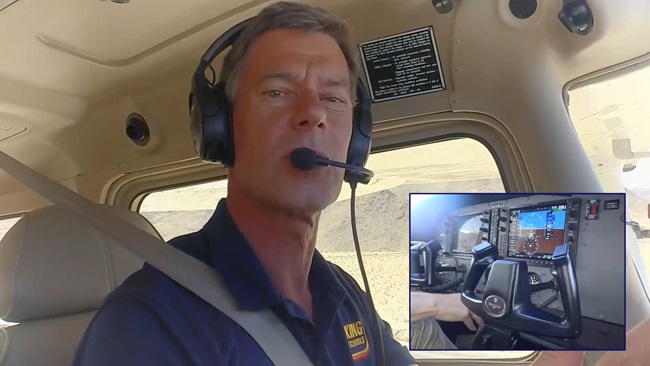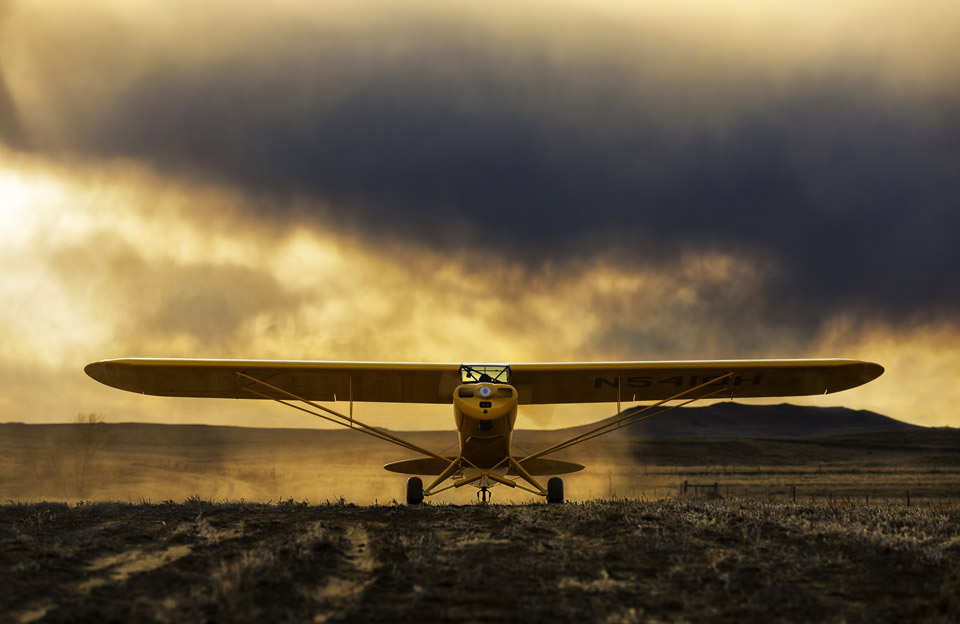
Pilots find breathtaking beauty in the curve of a propeller, the shape of a wing, even the thoughtful interface of a piece of avionics. But who makes this stuff and, in some cases, keeps it beautiful for decades? Our occasional Craftsmanship series explores the people who create—and re-create—these things for us. —Tom Haines
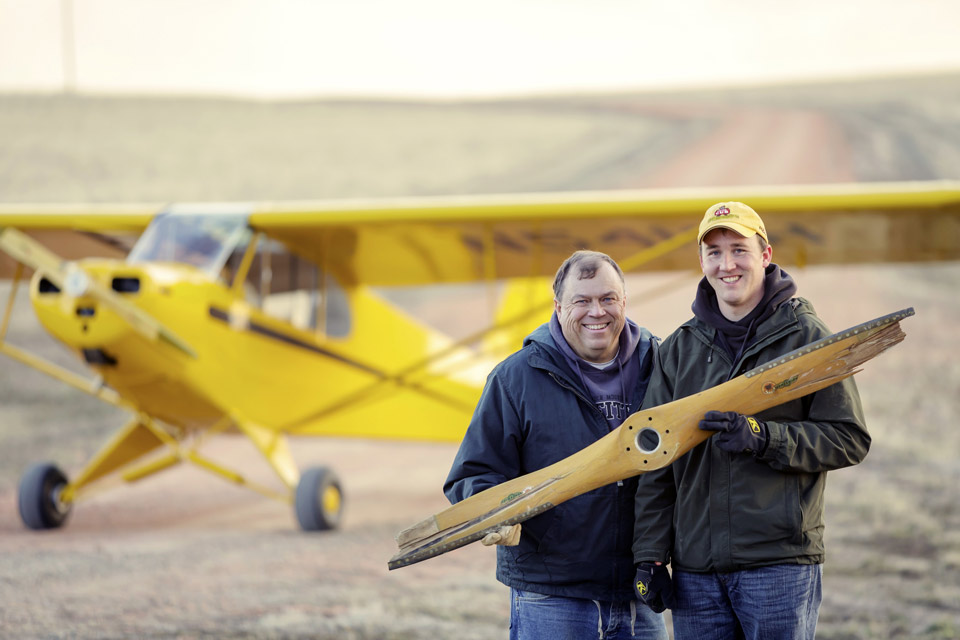
They had difficulty finding smooth tires, so they bought a new pair of Goodyears and then ground off the tread and had them recapped. They bought a replacement wood propeller from Sensenich but struggled to replicate the 1949 logo which contained an orange dot and the words, “Especially made for Piper.”
Just as they were going to abandon their search, Darin found a splintered and broken Sensenich prop in their shop. It had been destroyed decades earlier when his grandfather, also an ag pilot, taxied a PA–11 into a snowbank. Against all odds, it had the logo they were seeking, and they were able to duplicate it. “We take a lot of pride in our skill and dedication,” Roger says. “But we’re not above accepting plain old good luck when it comes along.”
The Meggers completed their work in July 2012, and Roger made the first flight. The two don’t remember planning that flight in any great detail beforehand. They just got to the end of their to-do list and flying was the next step in the process.
The 30-minute flight over Baker was uneventful, as hoped. The newly overhauled engine was responsive and quick, and the rigging was perfect. In fact, the rigging hasn’t been adjusted at all in the 125 hours the airplane has flown since then.
“There are parts of any aircraft restoration that I enjoy more than others,” Roger says. “But the real satisfaction comes from taking an airframe that has been damaged or is in really desperate shape and making it new again. Here’s an airplane that played a significant role in aviation history, and now people can see it for what it is and know that it looks as good today as it did the day it came out of the factory.”
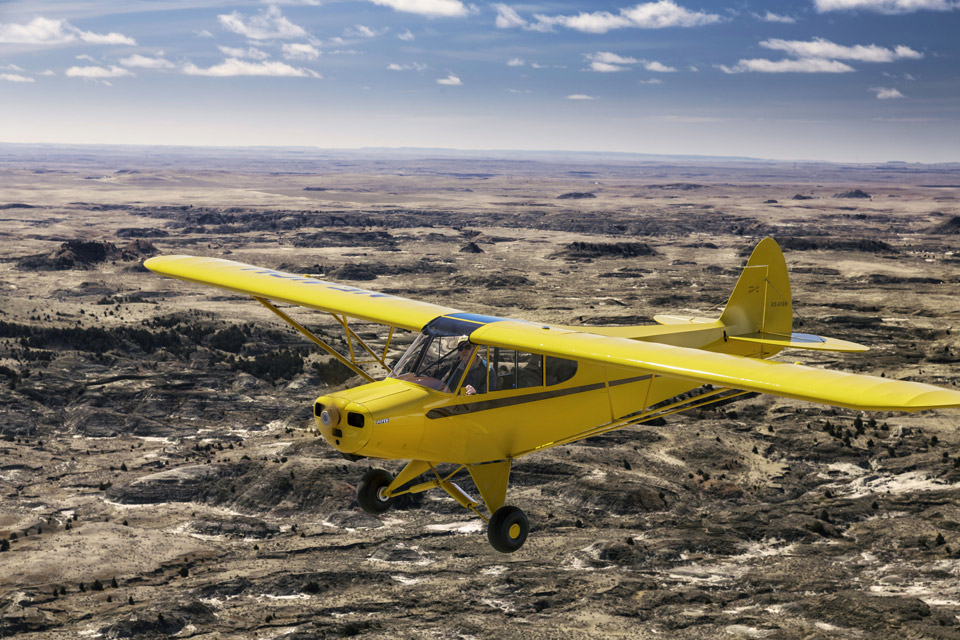
The Meggers’ goal when they started the restoration was a top Gold Lindy award at EAA AirVenture. The judges awarded them that prize, and they have collected many other prestigious awards—including the top award at Sentimental Journey, the annual Piper fly-in at Lock Haven, Pennsylvania, where the Super Cub was born.
Roger and Darin have flown their aircraft all over the country, and they are gratified by the recognition the airplane gets—especially from aviation historians who appreciate N5410H’s rarity, and the attention to detail that went into its restoration. “It means a lot when the people who know airplanes well tell us we did a good job,” he says. “Our goal was always to win at Oshkosh. But we were still surprised when it happened.”
Flying an original
The weather was typical for spring in eastern Montana: nasty. Four miles visibility with light snow, broken clouds at 2,200 feet agl, overcast at 3,500 feet, and a cold wind out of the northwest at 17 knots gusting to 22. Strapping into the immaculately restored Super Cub, the narrow, straight-back seat serves as a reminder that people tended to be a bit smaller in the 1940s. And they were perhaps more optimistic, too, since aircraft like this first Super Cub had only a single seat belt across the lap, and no shoulder harnesses. There’s no electrical system or radio in this airplane, so I jam foam plugs in my ears and do without a headset.
Darin Meggers has flown Super Cub One as far as Pennsylvania (an 18-hour trip), and New York. But his preflight briefing is short and to the point. “You’ll feel every groove in the runway with that tailwheel,” he says of the thin, hard-rubber tire. “The engine rpm comes up fast, and the airplane will be ready to fly before you expect it. The cabin heater works really well. And make sure to use carb heat, and avoid long periods at idle power.”
The heel brakes are well positioned, and the notorious expander-tube brakes work well, but they creak as Darin pushes against the aircraft to test them before spinning the propeller by hand.
The little Continental engine comes eagerly to life, and the tiny airplane on the vacant ramp is jostled by a combination of wind and about 1,000 propeller rpm. The oil temperature stays cool during the quarter-mile taxi to the active runway, and a standard runup barely gets it to 100 degrees. Finally, I’m too impatient to stay on the ground any longer. I line up with the centerline and advance the throttle slowly, using about four seconds to reach full power. The tail is up at two seconds, and by the time the throttle reaches the full-forward position the airplane is flying. The fine pitch and light weight of the wood prop allow it to reach 2,400 rpm almost instantly, and the airplane climbs energetically at an estimated 12-degree pitch attitude and 70 miles per hour.
With the single 18-gallon fuel tank in the left wing about half full, Super Cub One’s performance is close to that of a more powerful but heavier 150-horsepower model. Tight, extremely well balanced controls give this first-of-its-kind aircraft a crisp feel that’s slightly heavier in pitch than roll. Even on a windy day, the airplane has a substantial, big-airplane feel that belies its diminutive size. A series of stalls reveals a gentle nature that has become a well-known Super Cub trait. Power-off stalls are preceded by a gentle buffet and a mild, straight-ahead break that comes only with full aft stick. There’s no inclinometer in this Spartan panel, but slips and skids are easy to feel on the narrow seat. Steep turns at 100 mph and 2,400 rpm have a remarkably small radius. Full power keeps the airspeed at 100 and compensates for the higher induced drag at 60 degrees of bank. Lazy Eights are a pure joy as the Super Cub shows a mix of playfulness and obedience. There are no navigational instruments in Super Cub One except a compass, so I stay within sight of the airport.
I choose the 1,700-foot gravel patch that faces west for my first approach and landing. The northwest wind remains at about 20 knots, but Super Cub One has plenty of rudder authority to compensate for the quartering headwind. Even though the wind is blowing, the ride is unusually smooth as I approach at 60 mph and touch down on the right main wheel first, then the left. I bring the tailwheel to the ground as the airplane decelerates, then add full power and climb again. My next approach is five knots slower, but without flaps the little Super Cub doesn’t seem to want to slow down. With the right wing down and nearly full left rudder, I slip at 55 mph and touch down in a three-point attitude. The airplane decelerates smoothly without braking and comes to a stop after a ground roll of about 250 feet.
This delightful, lovingly, and exceptionally accurately restored airplane is still relevant 65 years after it first took to the sky. Its utility, simplicity, and adventurous spirit have appealed to generations of pilot around the world, and those qualities matter now as much as ever.
Sure, the Super Cub has evolved over the years with countless modifications. And even though Piper no longer makes them, the Super Cub’s essence has been reinterpreted, and its legacy continues through Carbon Cubs, Legend Cubs, Aviat Huskys, and others. All of these airplanes’ best qualities, or at least hints of them, are present in Super Cub One.
Today’s backcountry airplanes can trace their origins directly to this unassuming yellow marvel that toiled in obscurity for decades. But now, thanks to Roger and Darin Meggers, this rediscovered gem finally is being recognized as the pioneering aircraft that it is.
Email [email protected]
Photography by Mike Fizer
Video Extra: See the father and son team at work on the Super Cub.
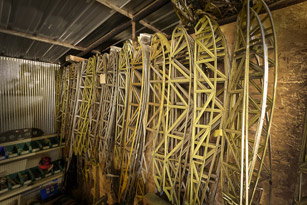
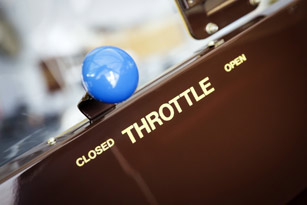
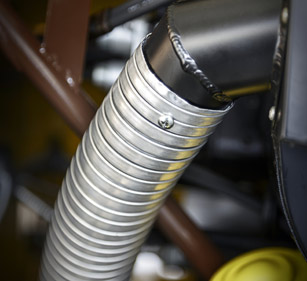
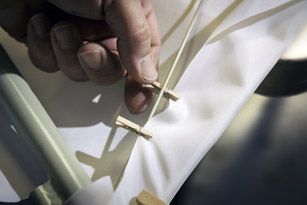
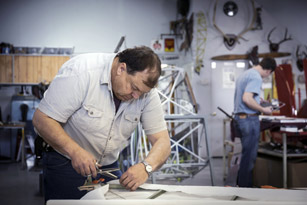
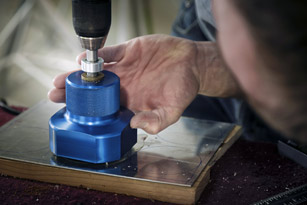
Working in a confined, hard-to-reach space deep inside a Super Cub fuselage, Darin Meggers lifts up his head to ask for a piece of tape. His father, Roger Meggers, anticipating the request, has already brought a roll from the far side of their tidy shop. He tears off a stub and hands it to Darin.
Here on the wind-swept, rolling plains of extreme eastern Montana, an area known for its vast grasslands, oil, and dinosaur fossils, this father-and-son team at Baker Air Service has restored dozens of Piper Super Cubs to as-new or better-than-new condition. Their masterpiece is an astonishingly accurate restoration of a 1950 Super Cub, the very first manufactured in Lock Haven, Pennsylvania. That airplane, N5410H, returned to the skies in 2012.
The Meggers’ exhaustive research and painstaking efforts at returning every aspect of the original Super Cub to mint condition has won them accolades in vintage aircraft circles, top national restoration awards, and the respect and gratitude of their peers. But their recent notoriety hasn’t altered the quiet, focused, respectful way that they go about their daily tasks in this harsh and remote oil boomtown of 2,000 people bordering the North Dakota badlands.
“We’re both perfectionists,” Roger, a burly pipeline patrol pilot, mechanic, and entrepreneur says of himself and his 28-year-old son. “Each of us knows how the other one thinks, so we help each other all the time without really being asked. Darin was raised in this shop, and we’ve worked together so long that providing a little help when it’s needed is almost a reflex.”
Roger’s stoic, weather-lined face quickly breaks into a wide grin when he talks about working with his son, a tall, lanky, soft spoken, and faultlessly polite fellow pilot and mechanic. Darin nods in agreement with his dad’s observations before ducking back into the fuselage.
When Darin was seeking an airframe and powerplant certificate in 2004, an FAA inspector asked Roger to document his son’s practical work experience. Roger showed a scrapbook containing photos of dozens of completed aircraft restorations, and Darin appeared in almost every one, first as a toddler, then a little boy, and finally a gangly teen.
“He’s been involved in almost everything that’s gone on here since he was old enough to stand up,” Roger says. “He’s learned everything I could teach him and much more. I’m still technically in charge, but he’s got his own ideas about what we should do and how we should do them, and I value his opinions. His skills and level of perfectionism go far beyond mine.”
Darin artfully deflects his dad’s praise by pointing out that he still isn’t Roger’s equal in specialized areas such as fabric covering and painting, or engine overhauls. And Darin has logged about 5,000 hours of flight time. That’s a big number, but it’s less than one-quarter of his dad’s current total. “You may not be as confident in your skills in some areas as I am in mine,” Roger says. “But that will come sooner than you think.”
Super Cub One
The original Super Cub had a tough, sparsely documented life. N5410H first flew on November 23, 1949, and that first 30-minute test flight wasn’t seen as a watershed moment for Piper, or general aviation, or the pilot who performed it.
“Test flight” was noted in the airframe logbook, along with the duration and the empty weight: 781 pounds.
No photos of the airplane are known to exist from that era.
Next, it went to Portland, Oregon, where it was used as a testbed for agricultural modifications. The owner added an experimental landing gear for backcountry operations as well as flaps, and a 150-horsepower Lycoming engine replaced the original 90-horsepower Continental after just 121 flight hours.
The airplane was put to work as a sprayer in Idaho and Montana, and it suffered some hard knocks. The landing gear was badly damaged in an agricultural mishap, and a wing was scraped in a ground loop. The damage and repairs were dutifully noted in aircraft logbooks, but the descriptions were spare and leave much to the imagination.
The working airplane was owned for nearly 40 years by an individual in Idaho, then was offered for sale on eBay in 2008. The online advertisement made no mention of the forlorn Super Cub being the first ever produced. The ad came to the Meggers’ attention, but the airplane seemed unremarkable. “A ratty old Super Cub,” Roger thought to himself, and a bit overpriced at that.
A contractor in Bend, Oregon, ended up with the airplane and contacted Baker Air Service about restoring or perhaps trading it for an updated model. In their conversation, the owner stated that this was Super Cub number 18-1, and Roger immediately wanted it. The owner asked what would happen to the airplane if Roger purchased it, and he said he would restore it to original condition. The owner decided not to sell at that time, but Roger convinced him to keep his telephone number in case he ever changed his mind.
A year later, Roger got the call he was hoping for. He paid “about $10,000 more than the airplane was worth” to obtain it. He and Darin flew N5410H for about a year and a half. Then, in October 2011, they took it completely apart for what would be their first restoration of an aircraft to factory original condition.
As winter descended on the Northern Plains they spent nearly every day in the shop in a sustained effort to get the airplane ready for the 2012 show season, which also marked the seventy-fifth anniversary of Piper’s landmark J–3 Cub.
The pair went to extraordinary lengths to use the same kinds of nuts, bolts, and fasteners as the original. They found the right cream-colored instruments, an existing ivory mixture knob, blue knobs for the throttle and control stick, and they matched the brown interior paint from original parts. They unearthed a few rolls of brass safety wire from the era—and, of course, they did without modern conveniences such as orange scat tubes, hose clamps, Velcro, or zip ties.
Roger found a similar C-90 engine and overhauled it himself. He and Darin replaced longerons that showed any hint of corrosion. They also made new cables and crimped them in exactly the same way that Piper workers did in the 1940s.



